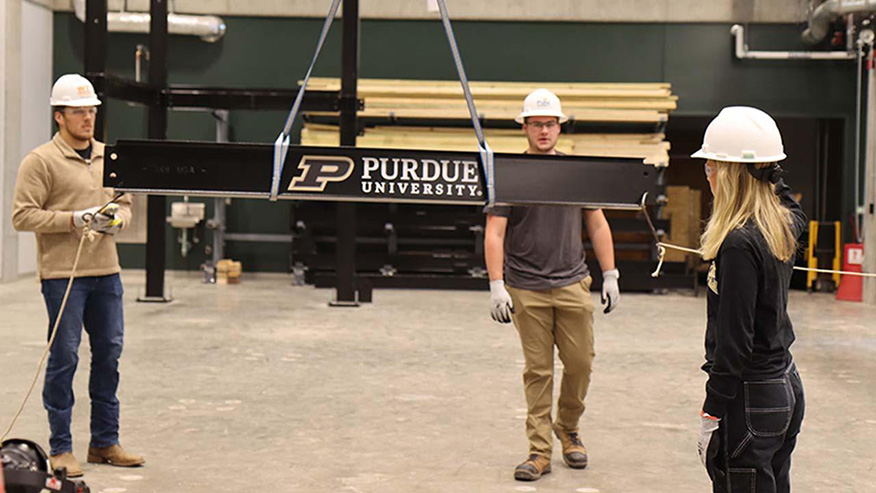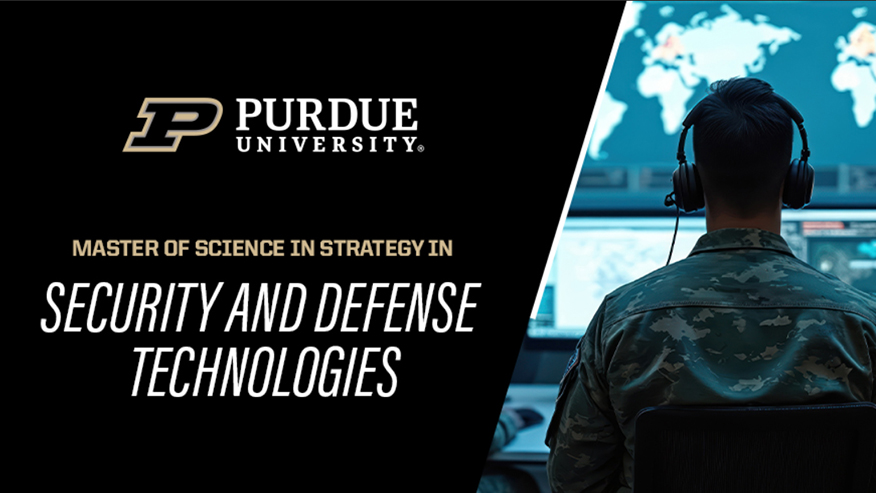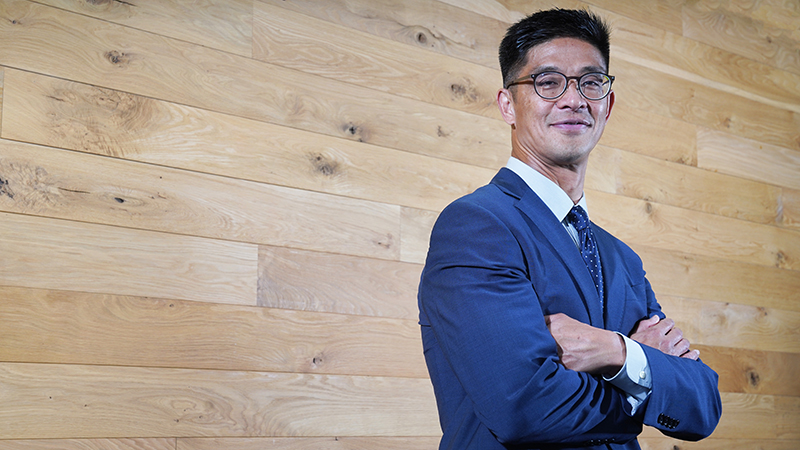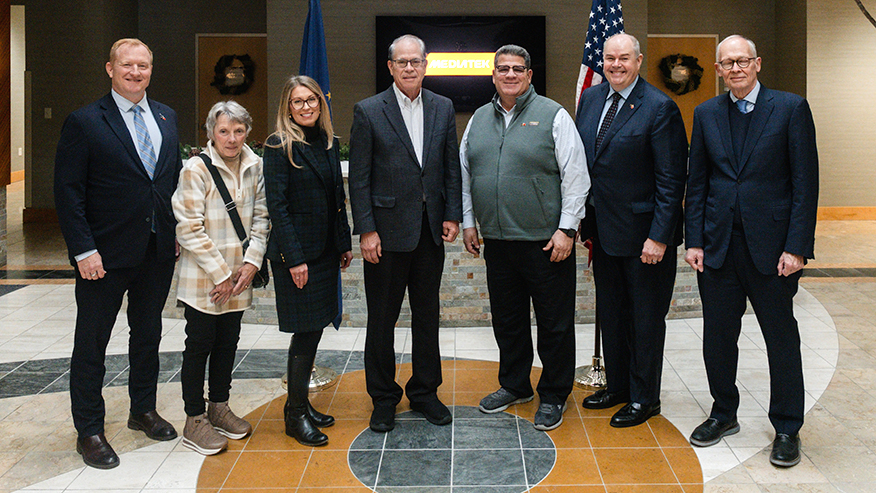New quantum materials promise unimagined innovations in computing, memory
Purdue physicist works to build foundation for new Quantum Age
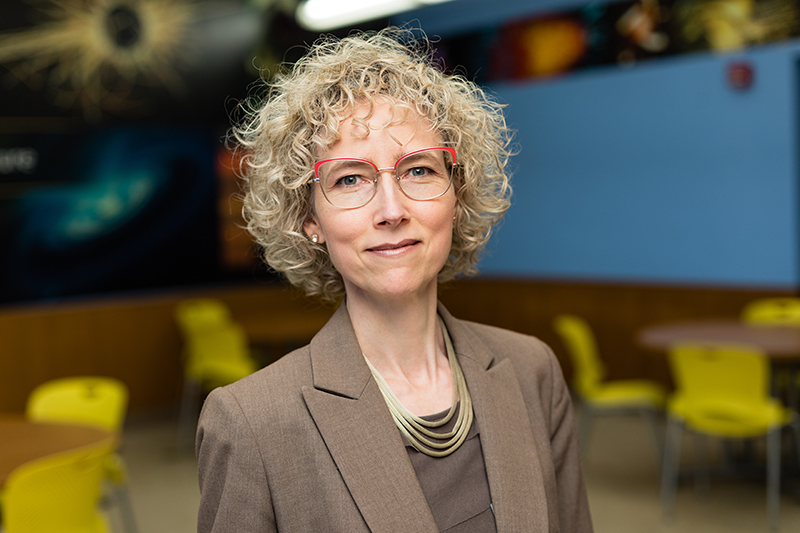
Physicist Erica Carlson explores the properties of quantum materials and their exotic new particles. (Purdue University photo/Brian Powell)
WEST LAFAYETTE, Ind. —
To build something fantastic, you need fantastic building blocks. Which is exactly what physicists are creating: new materials, with qualities undreamed of in our current world.
Erica Carlson, 150th Anniversary Professor of physics and astronomy in Purdue University’s College of Science and a member of the Purdue Quantum Science and Engineering Institute, is one of those physicists working to develop quantum materials to design future technologies in the fields of computing, construction, medicine, engineering and more.
Quantum materials sound futuristic, but they include materials as fundamental as magnetized iron. Quantum materials produce exotic particles, and thus behaviors, that would be impossible in the wider world.
“It’s like a new universe inside these quantum materials where you can get particles that you couldn’t get out in the wild,” Carlson said.
The advent of increasing numbers of progressively exceptional materials is launching a new wave of innovation, making unimagined future technologies possible. Quantum research is one of four key pillars of the Purdue Computes initiative, which emphasizes the university’s extensive technological and computational environment.
ADDITIONAL INFORMATION
- Purdue University joins Chicago Quantum Exchange, tapping into the region’s efforts to advance U.S. leadership in quantum technologies
- Purdue invests $49M in semiconductor research and learning facilities
- Center for Quantum Technologies launches Industry-University Cooperative Research Center program
Carlson is an expert in quantum materials who is working with Innovation in Quantum Pedagogy and its Relation to Culture (IQ-PARC), a project funded by the Department of Defense, to create videos to highlight the intricacies of quantum physics and the possibilities of a quantum future. Carlson harnesses her acuity in theoretical physics and mathematical models to explore the properties of quantum materials and their exotic new particles.
Particles in our universe can move in three dimensions. Thanks to the laws of physics, that means they can either be a fermion — like quarks, electrons and neutrons — or a boson, like photons, gravitons or of course the Higgs boson. Particles are strictly binary: It’s either one or the other and never anything in between.
However, quantum materials reject that reality and create their own. A quantum material is like its own tiny, self-contained world. Inside that material, particles don’t have to follow the rules of the rest of the universe. We can find exotic particles that don’t exist elsewhere, like spinons, holons, vortices and skyrmions, each of which behave in ways that regular particles cannot. Quantum materials called spin ice host magnetic monopoles, long hunted for in the natural universe but never found. Quantum material interfaces can even host particles that are somewhere between fermions and bosons, so they can be anything, which is why physicists call them anyons.
Each type of particle can do fundamentally different things, meaning current technology harnesses fermions and bosons for different jobs. Bosons are helpful for conveying information over distances: They are used in Wi-Fi, Bluetooth technology, fiber-optic cables, cellphones and satellites. Fermions like electrons, on the other hand, work best for local information storage and computation.
The zoo of new particles inside quantum materials could prove to have completely unimagined utilities and form the foundation for whole new fields of science and technology. Some are already being used in devices including quantum computers and medical devices. Others are only being dreamed of.
“That’s what’s really fun about quantum materials — it feels like magic,” Carlson said.
Carlson uses her physics and mathematics modeling expertise to explain the basic properties of these building blocks that other scientists, engineers and inventors will use to build dizzying new realms of science, technology, exploration and application. Quantum materials can form the insides of appliances and smart devices. But they can also form the coatings of spaceships, protect humans from environmental dangers, and even change the baseline of what is physically possible for engineers to accomplish.
“The great part about being human is that we’re imaginative; we’re creative,” Carlson said. “When new technologies and new materials develop, we don’t always know what they will do for us. We don’t always have a road map. It’s up to people’s creativity to figure out what to do with these new things. It’s like an artist’s palette of pigments, and each time we give that artist a new quantum material, it’s like they have a new color to paint with. No one can predict what all inventors will do with these new capabilities that quantum materials provide, but I do trust that human ingenuity will do some great things with it.”
About Purdue University
Purdue University is a public research institution demonstrating excellence at scale. Ranked among top 10 public universities and with two colleges in the top four in the United States, Purdue discovers and disseminates knowledge with a quality and at a scale second to none. More than 105,000 students study at Purdue across modalities and locations, including nearly 50,000 in person on the West Lafayette campus. Committed to affordability and accessibility, Purdue’s main campus has frozen tuition 13 years in a row. See how Purdue never stops in the persistent pursuit of the next giant leap — including its first comprehensive urban campus in Indianapolis, the new Mitchell E. Daniels, Jr. School of Business, and Purdue Computes — at https://www.purdue.edu/president/strategic-initiatives.
Writer/Media contact: Brittany Steff, bsteff@purdue.edu
Source: Erica Carlson, ewcarlson@purdue.edu
Note to journalists:
